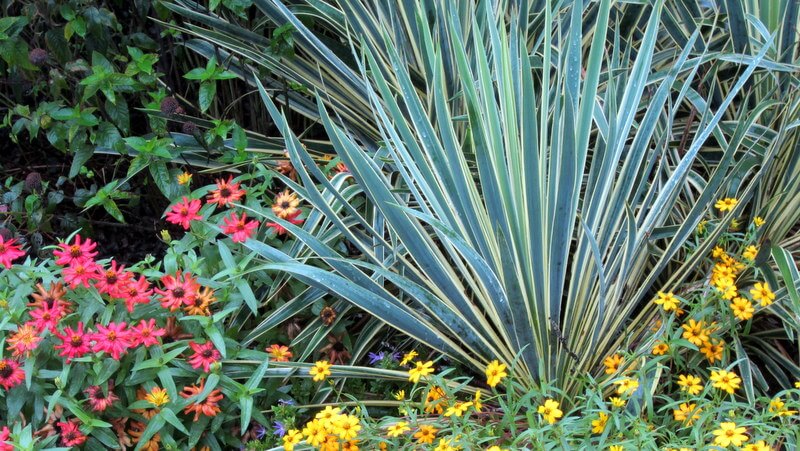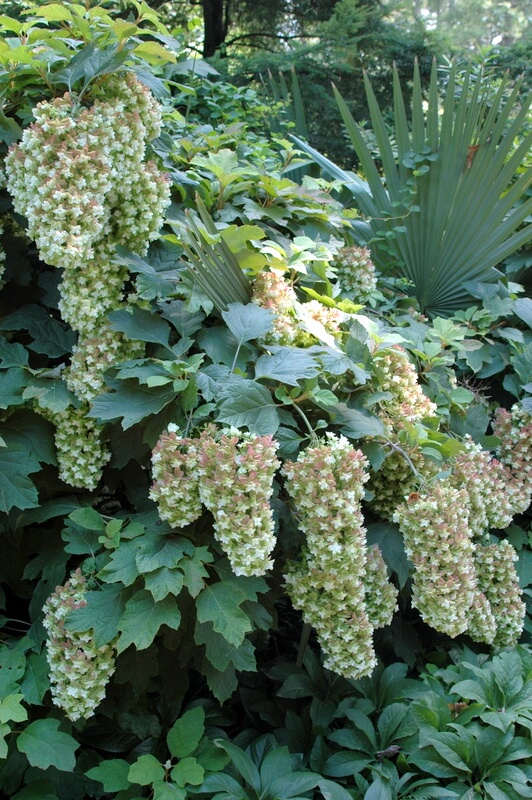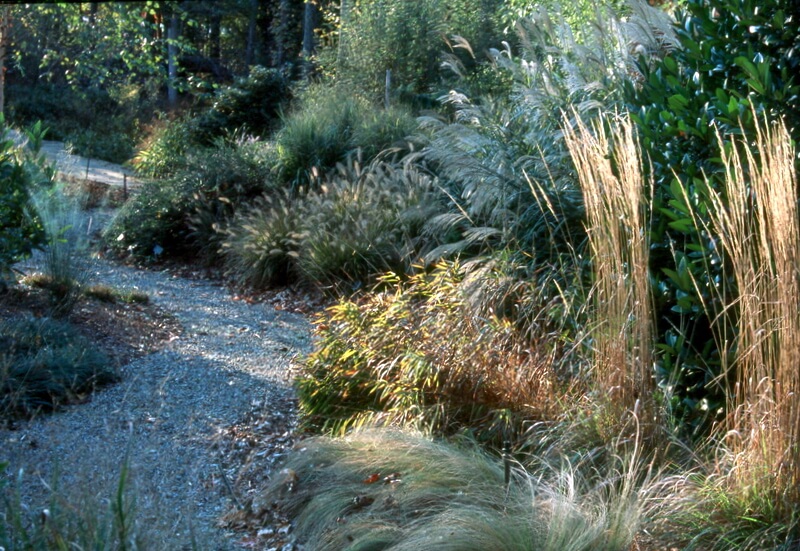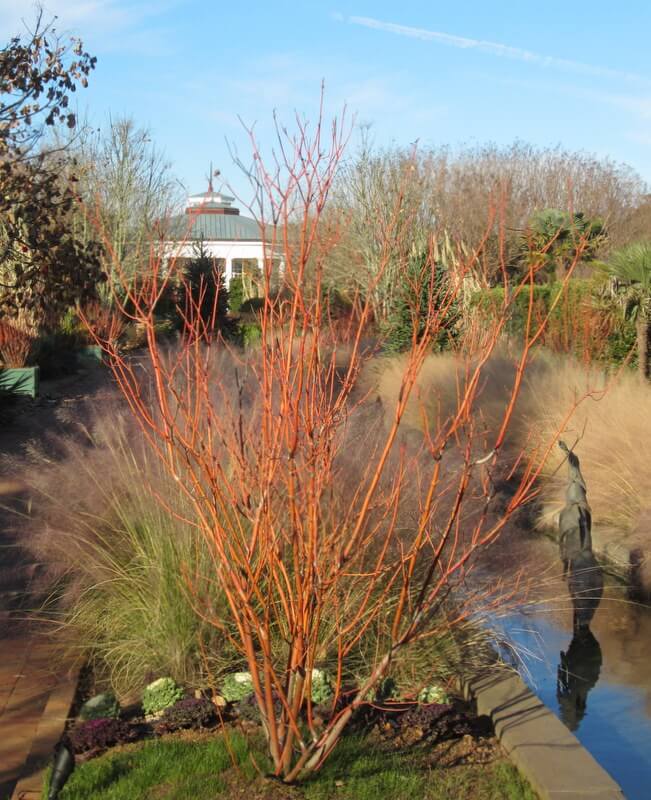
Every gardener wants a colorful garden that can be enjoyed throughout the entire year. Spring is easy as it emerges onto the scene with bright white and pastel flowers among newly budding leaves. Sunny annuals fill the color niche in summertime, as autumnal foliage does in the fall. But, winter’s landscape can be bleak, dull, almost a study in greys and browns.
Don’t give up on your dream. There are a few landscaping tricks of the trade that can help your property remain attractive throughout all four seasons.

Paths
First, design your garden from the ground up, paying special attention to your pathways. These critical hardscaping elements need to be both safe and appealing as this is how you and your visitors come and go. Secure paths with good footing will enable everyone to tour your landscape even in the worst weather.
Vertical Structures
Manmade structures, such as walls, fences, and arbors, naturally draw the eye when juxtaposed against nature. The same is true of other prominent decorative garden features like bird baths, sculpture, flags, and seating. Keep all of these ornamental touches well-placed and well-maintained as they will definitely stand out against your plantings.
Add Evergreens
Thoughtfully design your landscape so that evergreens compose at least a third of your plantings. You can do this by incorporating both broadleaf and coniferous evergreens into every gardening area.
Permanent green in your garden may also include your turf grass areas, which act as rugs and runners in a bare winter landscape. Round-shaped evergreen shrubs are attention grabbers, so these dramatic spheres are perfect for anchoring your garden during those quiet periods in the landscape between exuberant bloom times. This is when boxwood and small-leafed hollies are absolutely indispensable.
Consider incorporating more evergreen conifers into your design for their graceful structure and vibrant seasonal changes. When provided with enough sunlight, choice conifers may either intensify in color or alter their foliage color completely. For instance, the needles of a Pinus virginiana ‘Wate’s Golden’, which is normally a nice medium green in summertime, turns brilliantly brassy in winter.

Add Ornamental Grasses
Ornamental grasses are an important element in an all-season garden as grass adds movement, color, and soft sound throughout the year. If left uncut in winter, most grasses turn tones of light blond to deep rust that can be spectacular, even in snow. There are also evergreen decorative grasses such as Acorus and Carex which persist in shades of deep greens, cheerful yellows, or white and green variegation.
If your site allows, try evergreen ferns for dry shade to moist shady spots. Garden favorites include Autumn fern (Dryopteris erythrosora), Holly fern (Cyrtomium falcatum), and Tassel fern (Polystichum polyblepharum), which is related to our North American native evergreen Christmas fern (Polystichum acrostichoides). Amend fern beds with rich Black Gold Canadian Sphagnum Peat Moss for best performance.
If you are fortunate to live in areas where the woody lilies, such as Agave and Yucca survive, these upright architectural plants are always appreciated in a winterscape.
Keep Seedheads
Another way to extend the four-season beauty of your garden is to allow flower seed heads, pods, and the tassels of various perennials to remain in the garden throughout the winter, only cutting them back when new growth begins again in the spring.
Carefully choose specimen deciduous plants that provide four season interest. Japanese maples are a perfect example of a dramatically sculptural focal point in winter that can have as many as three different foliage color changes during the year.

Beautiful Bark
Winter woody plant bark color should also be considered when choosing the best plants for your four-season plan. Red and yellow twig dogwoods; stunning yellow, red, and coral bark maples; the frog-green stems of Chinese parasol tree (Firmiana simplex); or, the young golden branches of Salix alba ‘Vitellina’ willows make quite a statement.
Deciduous trees and shrubs with striped, mottled, or exfoliating bark are also candidates for your four-season landscape. Many gardeners are familiar with the sensational bark of crepe myrtles, but miss enjoying the peeling bark of our native Oak leaf Hydrangeas.
Utilize small trees and shrubs with naturally contorted branches like ‘Harry Lauder’s Walking Stick’ (Corylus avellana ‘Contorta’), contorted Quince (Chaenomeles speciosa ‘Contorta’), and Trifoliate Orange ‘Flying Dragon’ (Poncirus trifoliata).
If you would rather grow edibles, blueberries offer charming white bell-shaped flowers in spring, their signature indigo fruit in summer, blazing orange-red fall foliage color, with very attractive bark and interesting branch structure in winter.
And, don’t forget the charming presence of evergreen herbs such as piney rosemary, silvery lavender, numerous kinds of thyme, and delicious cold-hardy curly parsley.

